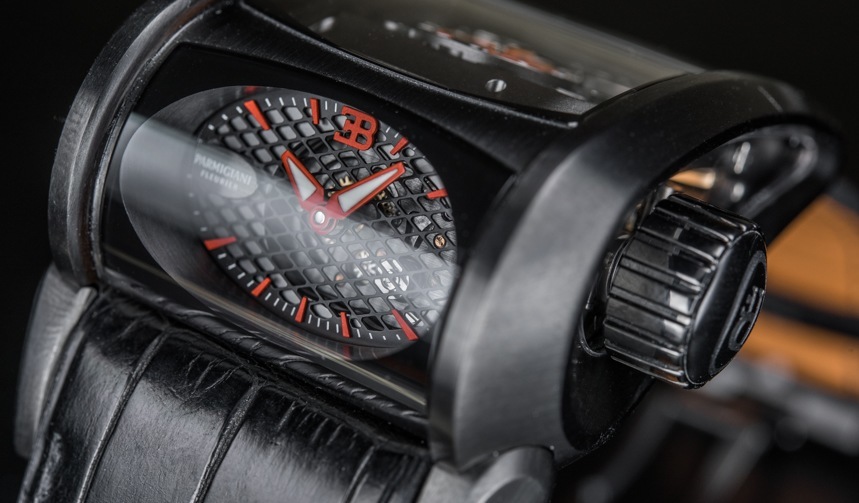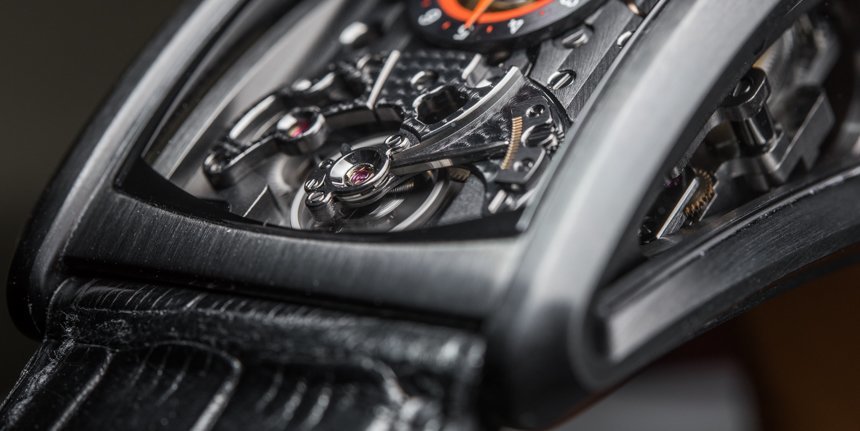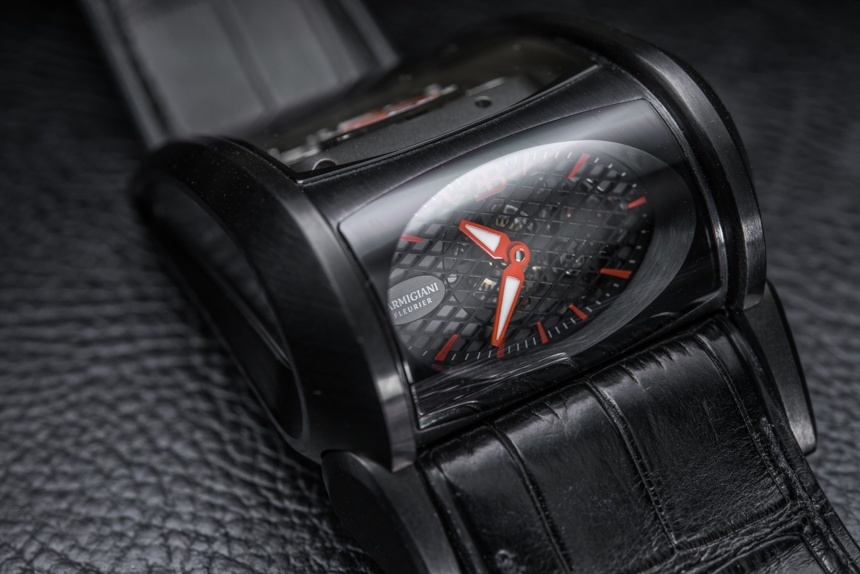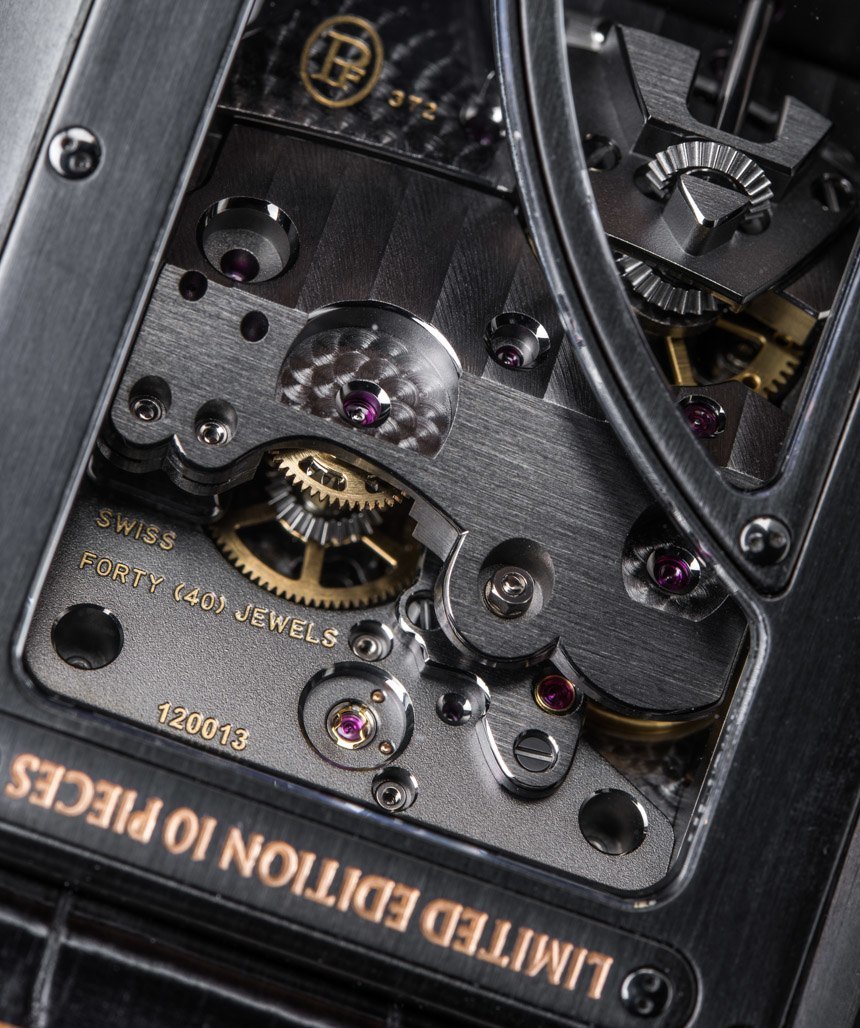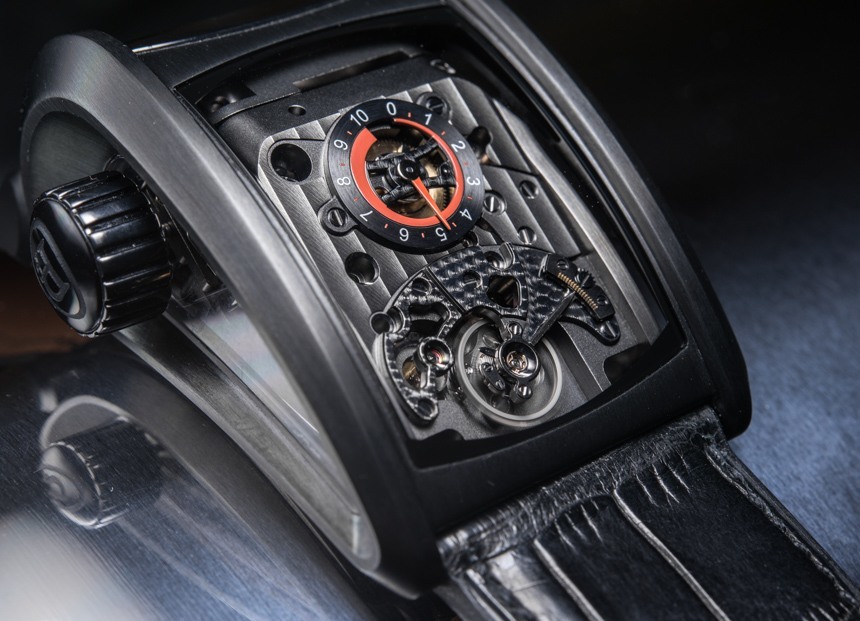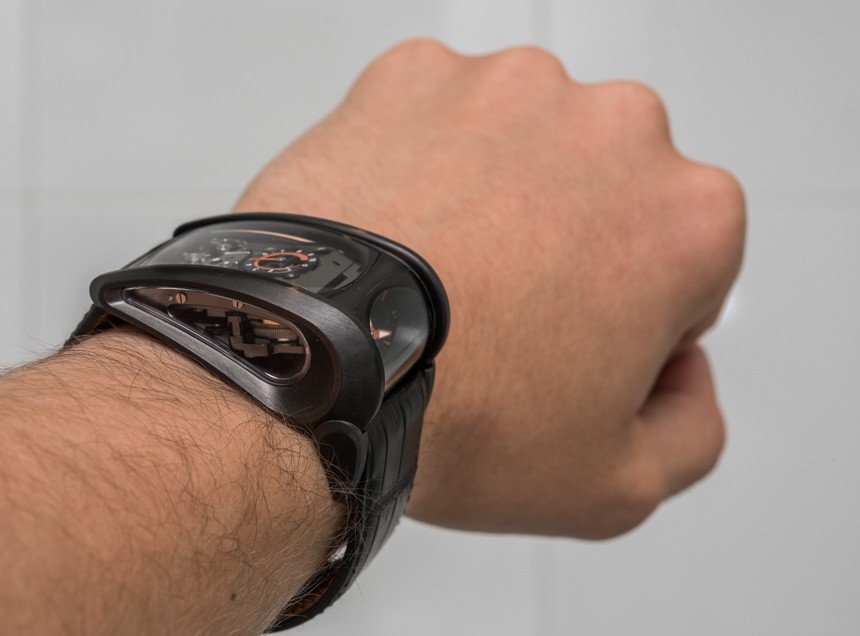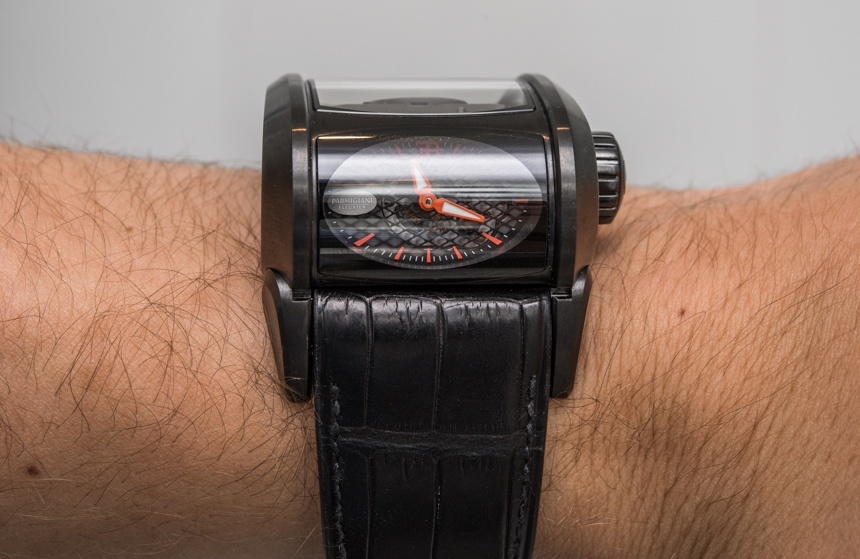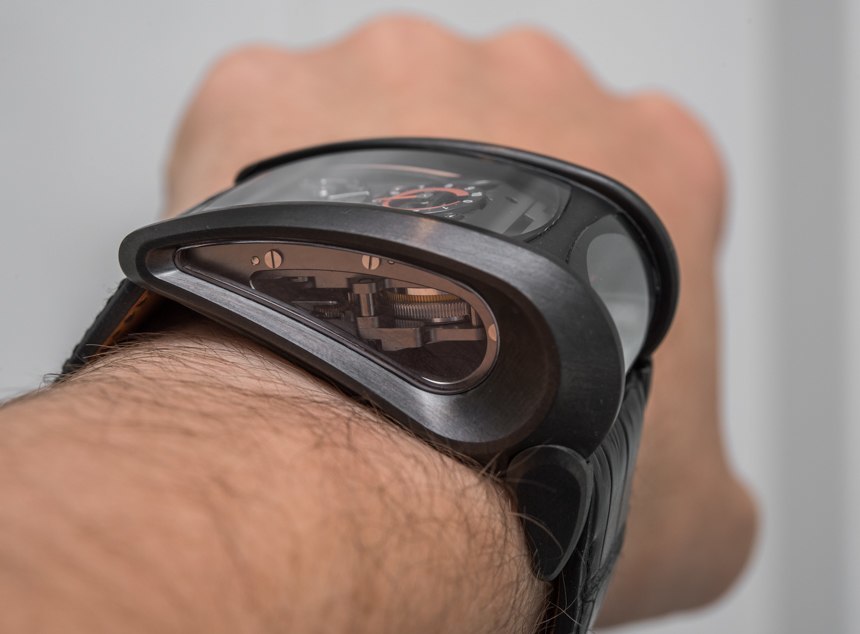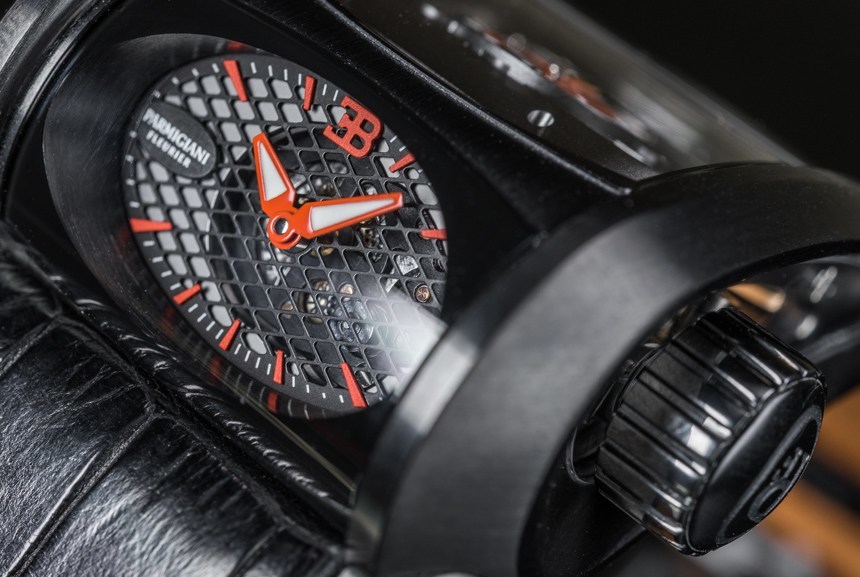
Now clad in an all-black case, the Parmigiani Bugatti Super Sport is more discreet, and yet, strangely, more powerful-looking than it has ever been. I have shown the images of this watch to friends and fellow watch enthusiasts – not a representative survey, I know – and despite the unique shape and the build quality meant to go with the six-figure price, none of them really gave voice to their absolute and immediate amazement. The Bugatti Super Sport – the watch here, not the car – looks funky enough, but it also appears to be too large, too heavy, too “art for art’s sake.”
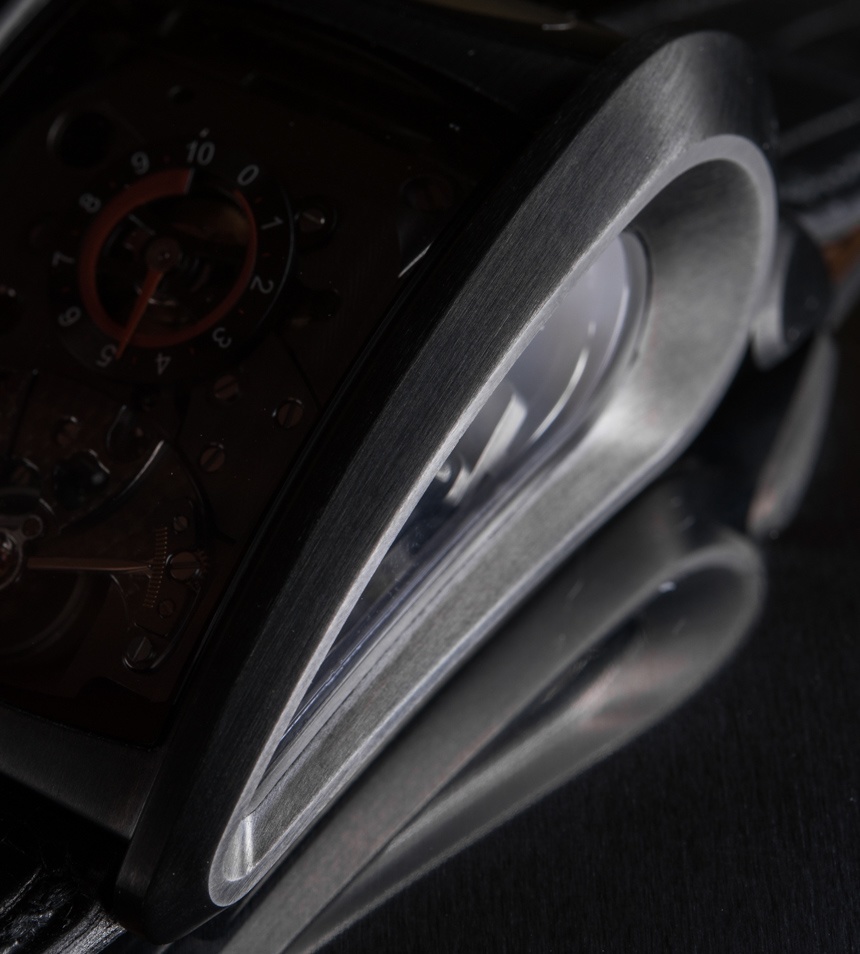
Having spent some quality time – which felt like an eternity, and yet it passed so fast – with it on the wrist, and also with it in my photo booth, I could at last take a closer look and try wrap my head around its wedge-shaped, yet somehow strangely and unnecessarily aerodynamic looking case.
As I was putting it on and then turning and twisting my hand to see the watch from different angles, I was trying to concentrate on this unusual – but trademark Parmigiani – tear drop case shape, and trying even harder to set aside my thoughts on the amount of work this bespoke movement took to develop and manufacture. Hence, let’s first scrutinize the shape and how it works in real life, and then move on to other, inner details.
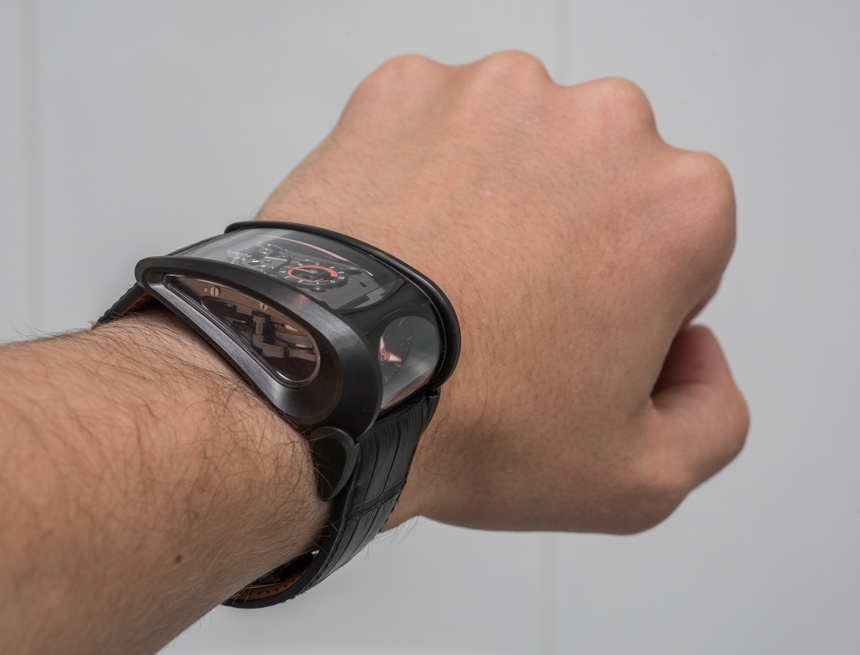
The case measures 36.3mm wide, 50.5mm lug-to-lug, and 23.3mm thick. Apart from the apparent thickness, those measurements are not at all bad, especially so when we consider that the strap connects almost directly to the case at the back, and to swiveling lugs at the front. In images, it looks large, and for anyone who has had the pleasure of handling more outrageous exercises in haute horlogerie, it is easy to imagine it as something hopelessly oversized and unwearable.
But, again, that is not the case. As far as proportions and actual size is considered, the Parmigiani Bugatti Super Sport looks massive and intimidating in images, but is in fact proportionate and of sensible dimensions in the metal – in that sense, I would compare it to vintage racecars that, in my experience, tend to work the same way aesthetically.
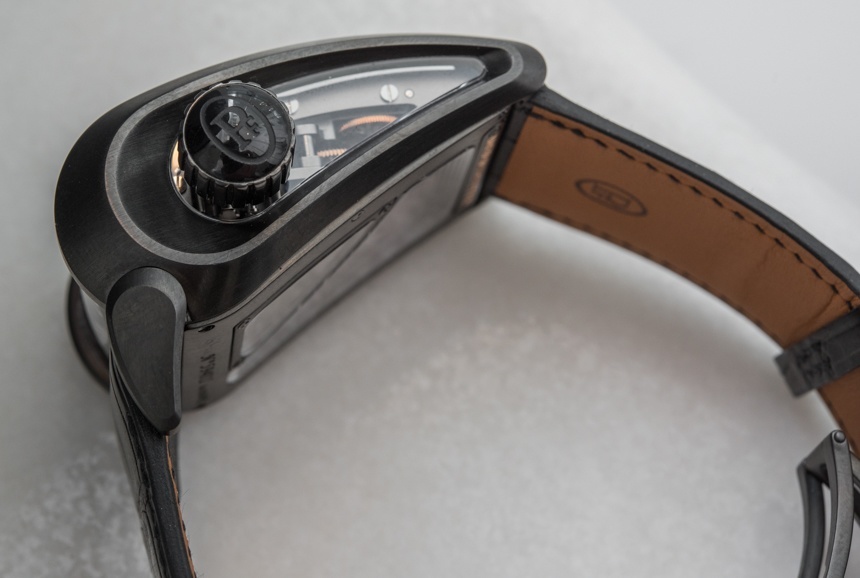
Practically speaking, as always, swiveling lugs make a world of a difference (how about more watches from more high-end brands start incorporating them into their designs?), while the shape of the case back and the softness of the Hermès strap, combined with a thoughtfully designed deployant clasp all work in favor of wearability. And so the first reason it is a sleeper is because it is actually of wearable size and design.
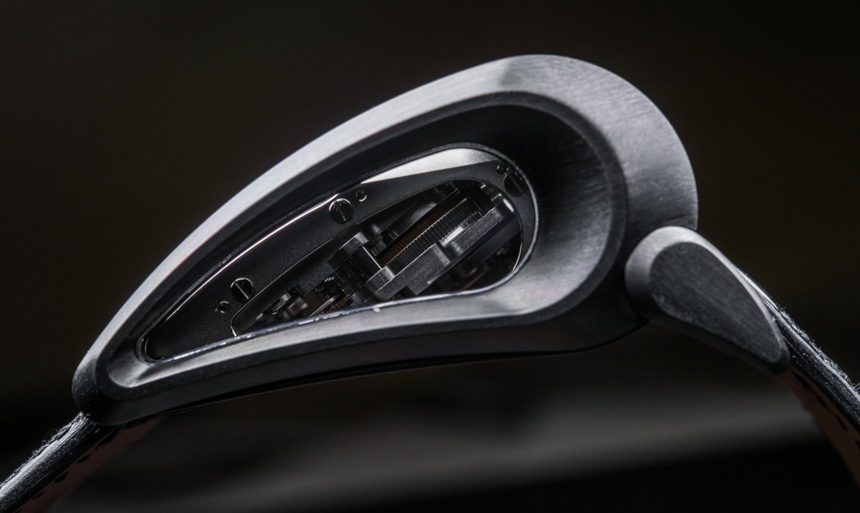
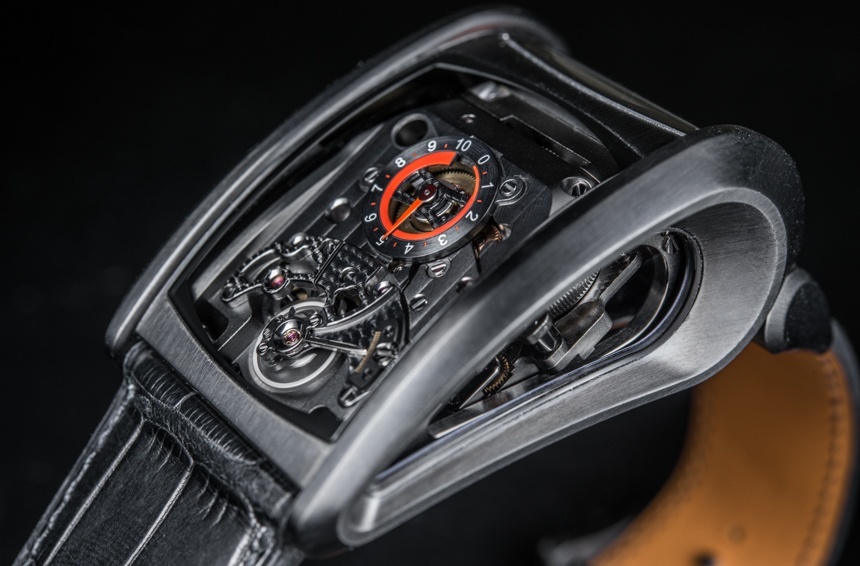
The second reason, sticking to the question of aesthetics here because it deserves a few more words, is just how beautiful and beautifully entertaining the design is. I would venture comparing it to a toned-down version of an HM4 or Dream Watch 5, because it basically is just composed of two tear-drops: one for the case profile and one for the lugs. It feels and looks so great you probably will want to lick it – you’ve been warned.
There is something difficult to grasp about the combination of such a simple and in fact remarkably natural shape that anyone can relate to, and the feeling that something so straight-forward can look so unusual and borderline out-of-place on the wrist. However, because the proportions of the design, the slope of the case back, and the (surprisingly reasonable) width and length of the case are all close to absolute perfection, aesthetically, the Parmigiani Bugatti Super Sport actually works – and works well.
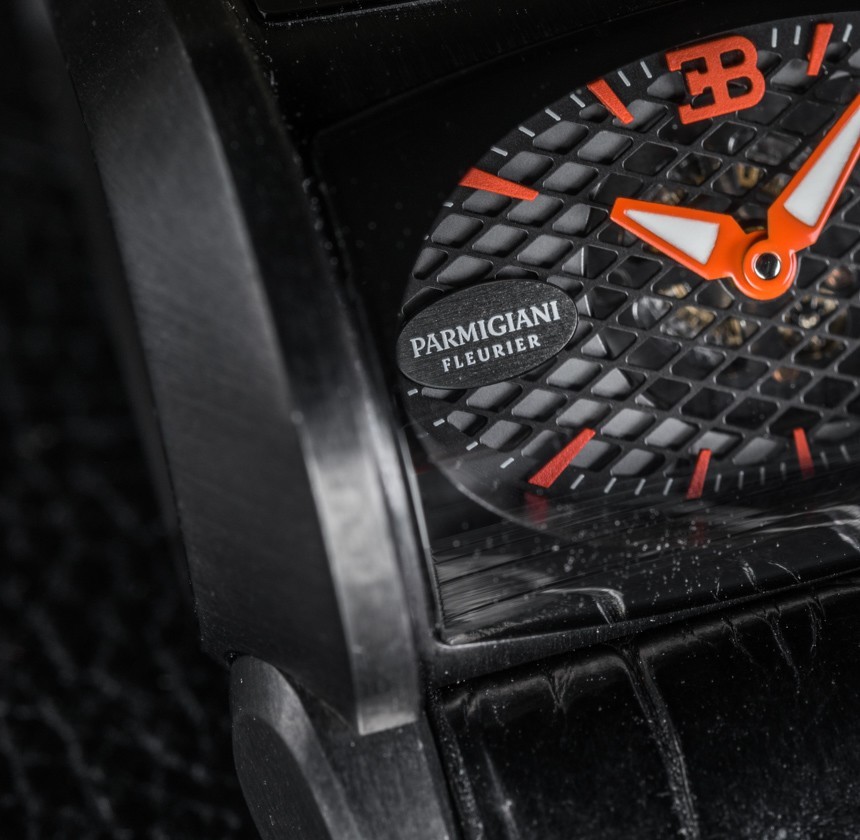
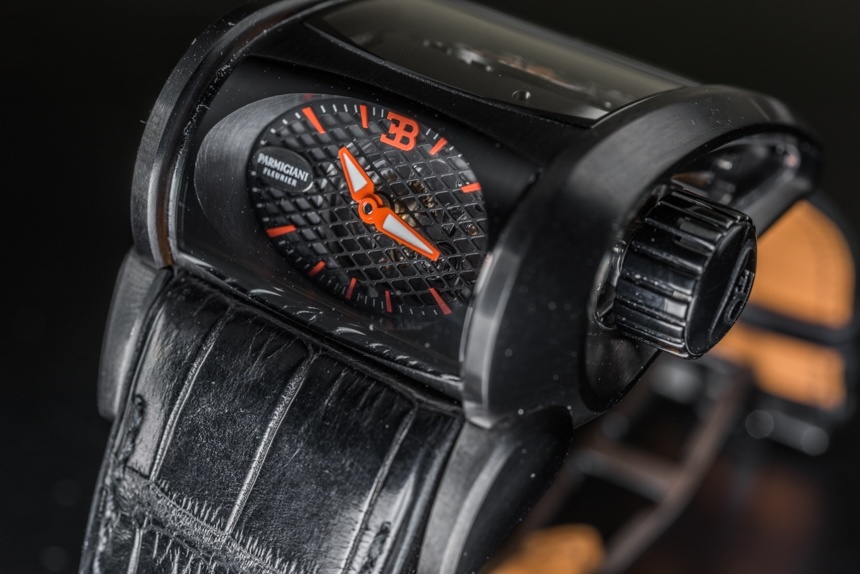
Being a “driver’s watch,” the time is displayed on the front, at a 90 degree angle to the plane of the movement. Arguably, this is more of an engineering feat than an absolutely vital feature in today’s world where most cars have at least two time displays on the dashboard. Still, while not entirely necessary, this layout is unquestionably convenient, as one needs not to turn his wrist while driving – or, as I found, also when working on the computer, reading, or dining – to read the time.
The dial is composed of some bright red-orange hands and indices, with the Bugatti logo (forming the initials of founder Ettore Bugatti) located at 12 and the oval Parmigiani logo at 9. The backdrop to all this vibrance is a complex mesh that provides a limited view of the movement behind it. The mesh goes well with the automotive theme and adds more depth to the dial – which is further increased by the oval, three-dimensional opening in the case that forms the dial, and the domed sapphire crystal that covers it all up.
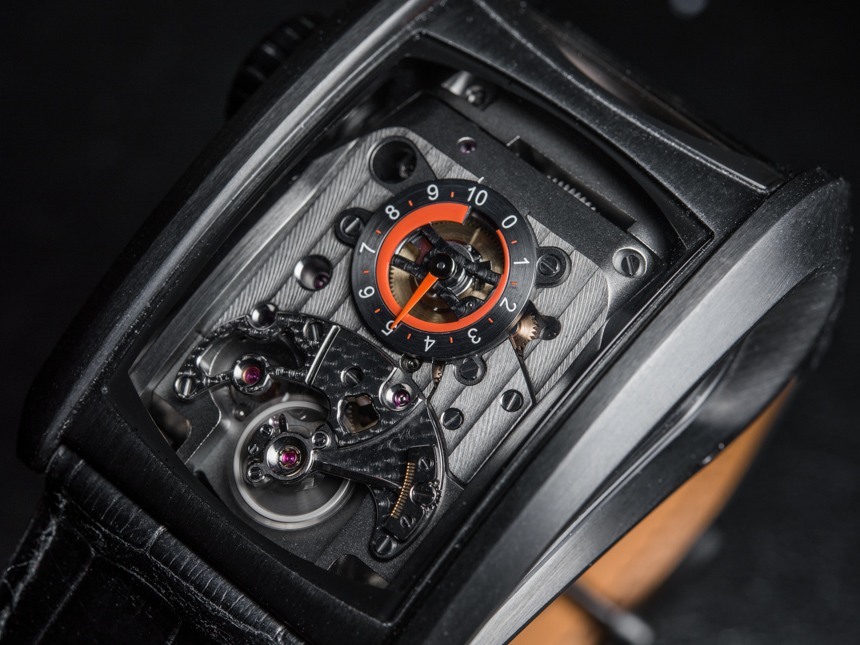
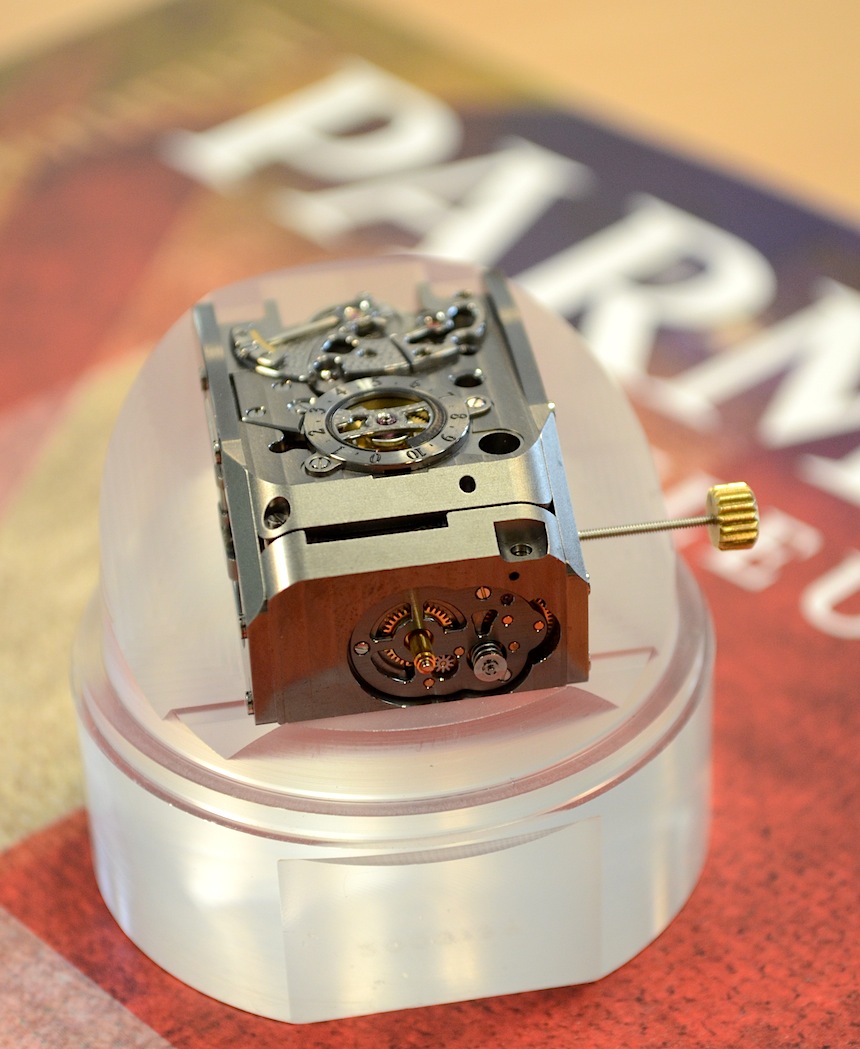
The centerpiece though is, of course, the movement. Having visited the Parmigiani Fleurier manufactures, including the facilities where they design and make the cases, and also where they conceive and manufacture the movements, it is just a cool thing to bear in mind that basically everything apart from the jewels, crystals, and some of the springs have been made by one of Parmigiani’s five specialized manufacturing facilities.
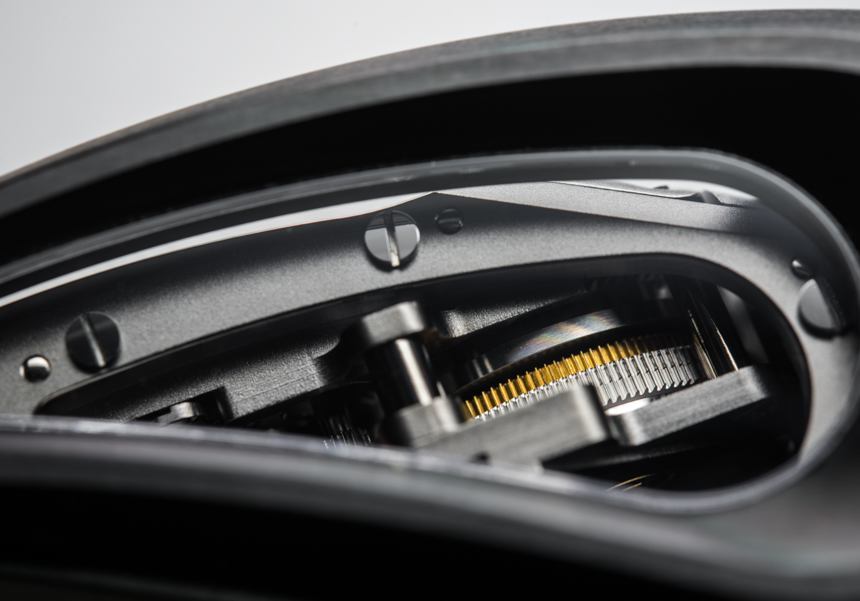
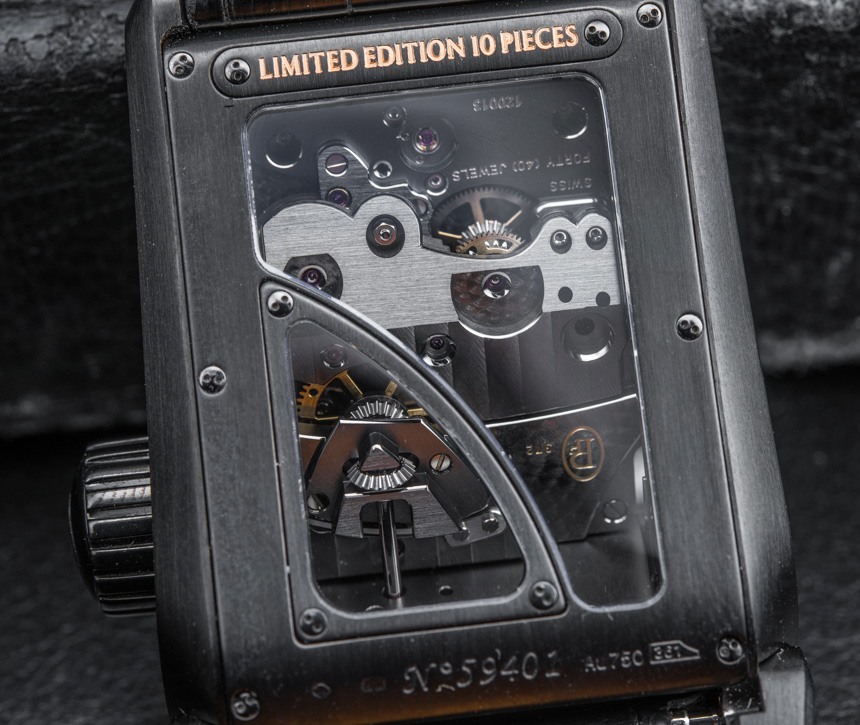
In the R&D department, I could see the 3D computer designs of the Parmigiani Bugatti Super Sport movement and could – virtually – fly into the caliber, moving inside the microscopic spaces left between plates, gears, screws, and hands. When the watch is sitting flat on the wrist, the main plates of the movement actually point 45 degrees upwards from the plane of the case back.
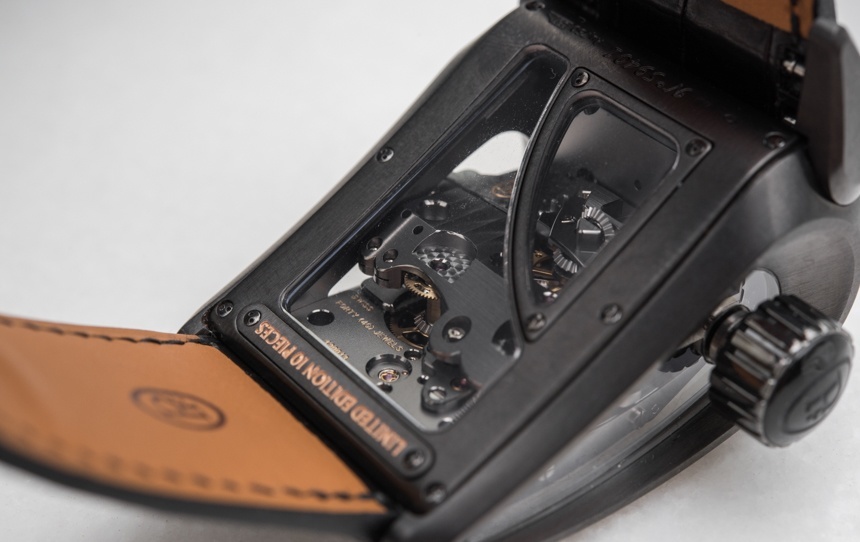
Look through the two, slightly curved and very peculiarly shaped sapphire crystals of the case back, and some more interesting details of the PF372 movement are revealed. First, you will see how the movement is in a different dimension compared to the case back and the dial – it reminds me of unusual, hillside homes built on slopes, where space is limited and multiple floors need to be built on an angled foundation.
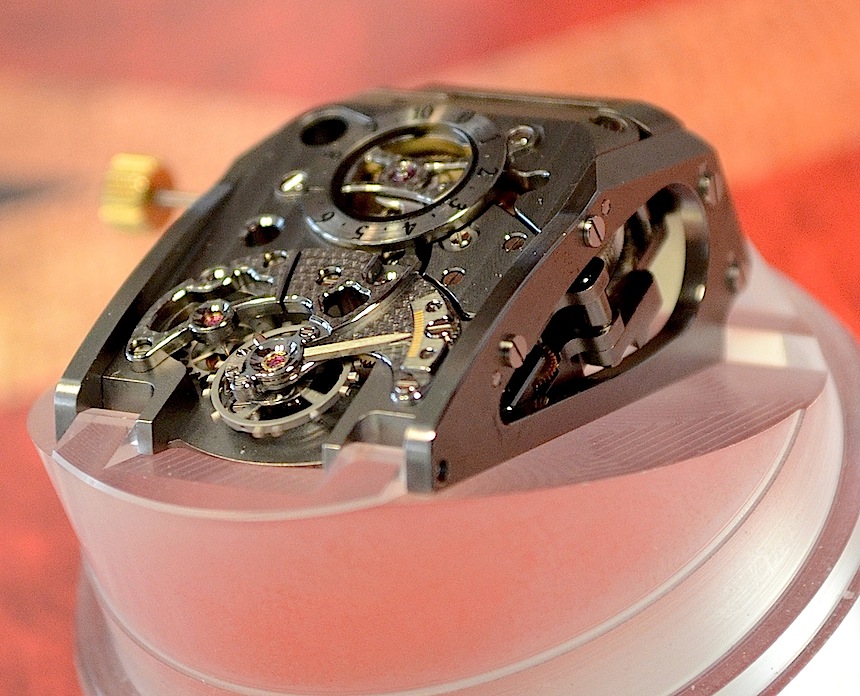
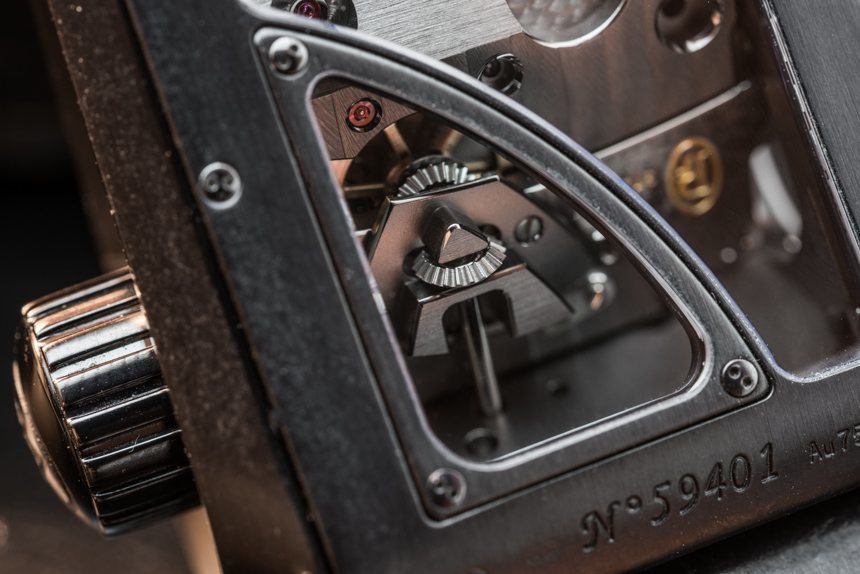
Watch movement wheels and pinions have their own special way of meshing and transferring energy, and because mechanical movements of old hardly ever stepped out from their two-dimensional layout, a solution had to be found to have the dial at a 90 degree angle to the movement. What you see in the center of the image just above is what Parmigiani claims to be the first bevelled gear in a watch movement: it looks and works in a fundamentally identical way to how the steering wheel is connected to the wheels in a car. This bevelled gear is used to connect the movement to the dial at the front, driving the hour and minute hands.
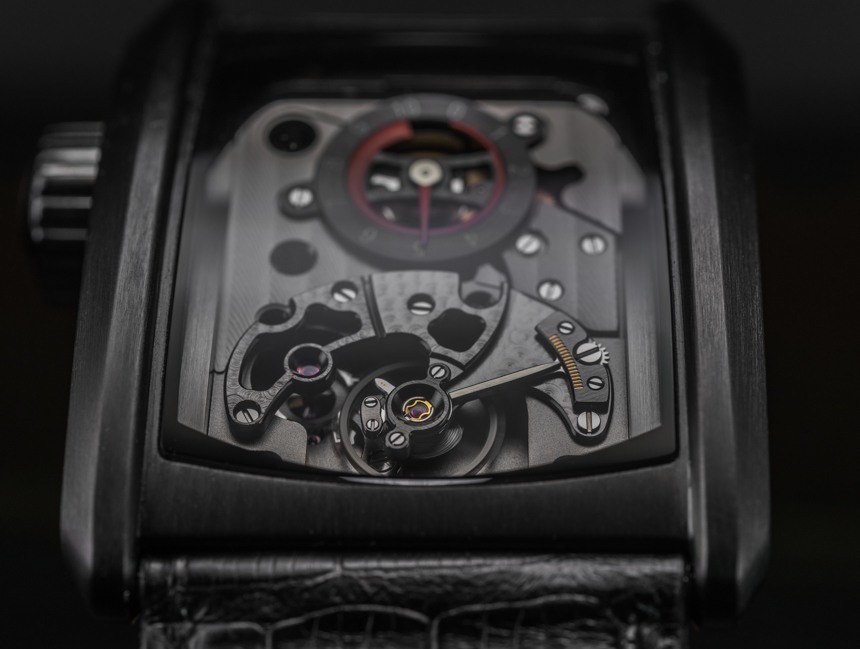
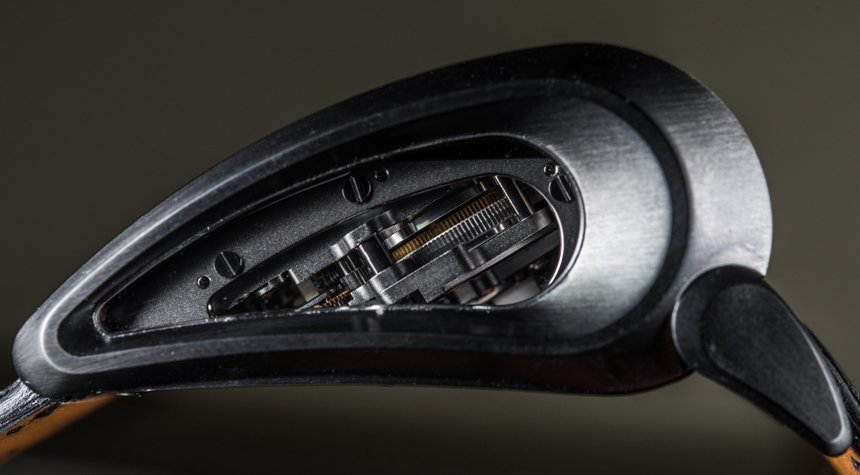
You can see the movement from all sides of the case: both elongated sides have tear drop shaped crystals, the sloping top (back?) of the case is covered by a single, large, beautifully crafted crystal, while, as noted above, the caseback is covered by two pieces of sapphire. Because the movement is beautifully finished and is visually so fascinating, it would be a shame to hide it under the dark case.
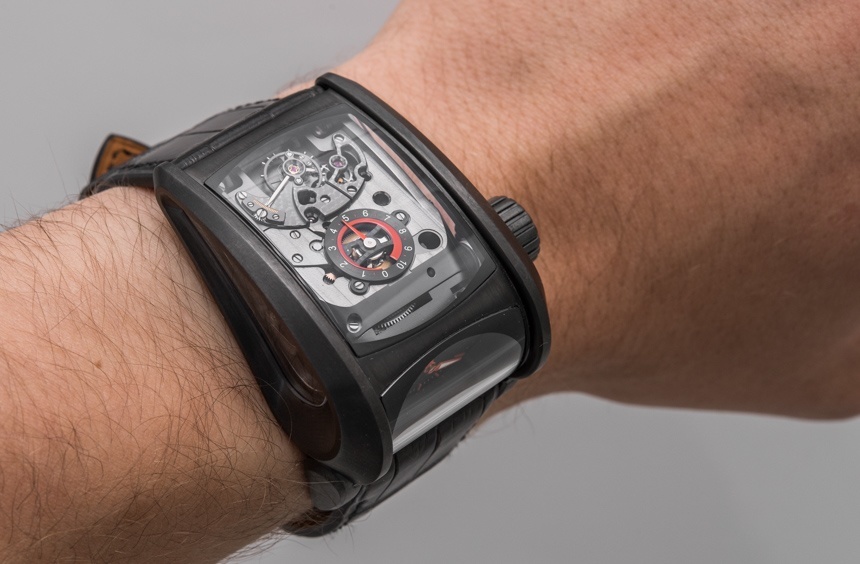
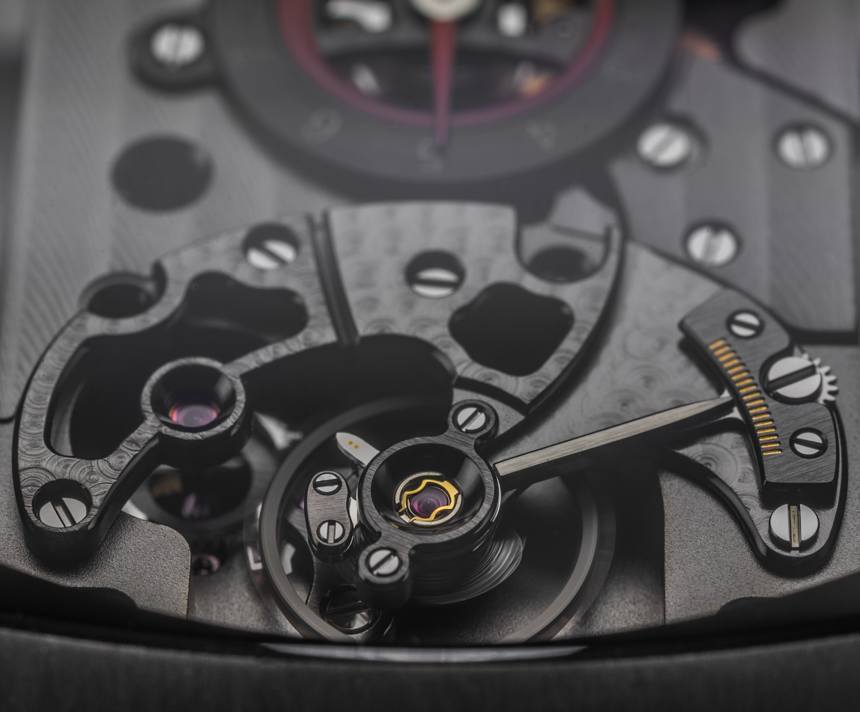
The case-top is, of course, the most amazing view of the movement, and it is just a flick of the wrist away. It shows the curved, angled, machined, perforated, decorated bridges, in the upper center of which is the indicator for the 10-days of power reserve. Below, it is the escape wheel secured by a skeletonized bridge, and the balance wheel, also held in place by an openworked, slate-grey part, adorned with hand-applied perlage, and topped off with a rather fancy looking fine-adjust system.
No tourbillon, no chronograph, not even a date or running seconds – the complication is the power reserve display, and of course, the layout and construction of the movement itself. Seeing it displayed through the apertures set into all sides of the case is a joy, and a rather ample reminder of why exactly you paid 1/6th the price of the actual Bugatti Super Sport car for the watch named after it.
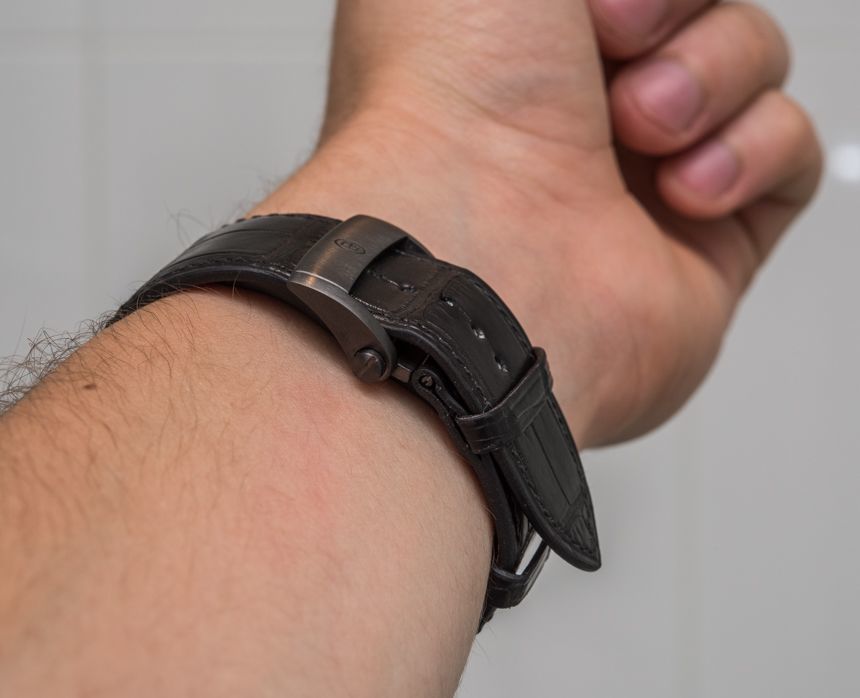
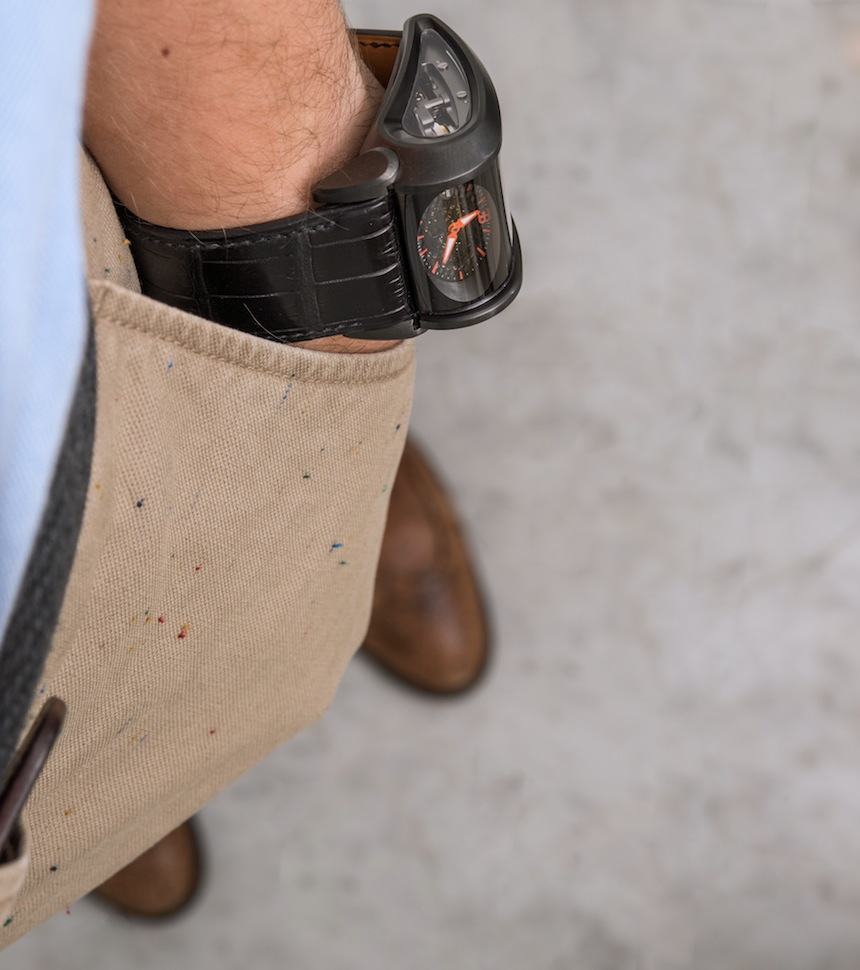
I left my favorite shot from this time with the Parmigiani Bugatti Super Sport as last, and you can see it directly above. I later tightened the strap by one more increment for a better fit, but looking down and seeing this on the wrist really is a sight to behold. I enjoy this shot because it makes this really peculiar watch just a bit more tangible, that little bit more “real.” Having seen where it was designed and the workshop where it was assembled, it did bring me closer to appreciating the amount of work that has gone into this justifiably weird watch… and I feel quite sure that every person whose work has gone into it would rather see it worn than tucked away into a safe – or discussed here without such images. Price for the Parmigiani Bugatti Super Sport is $285,000. parmigiani.ch

